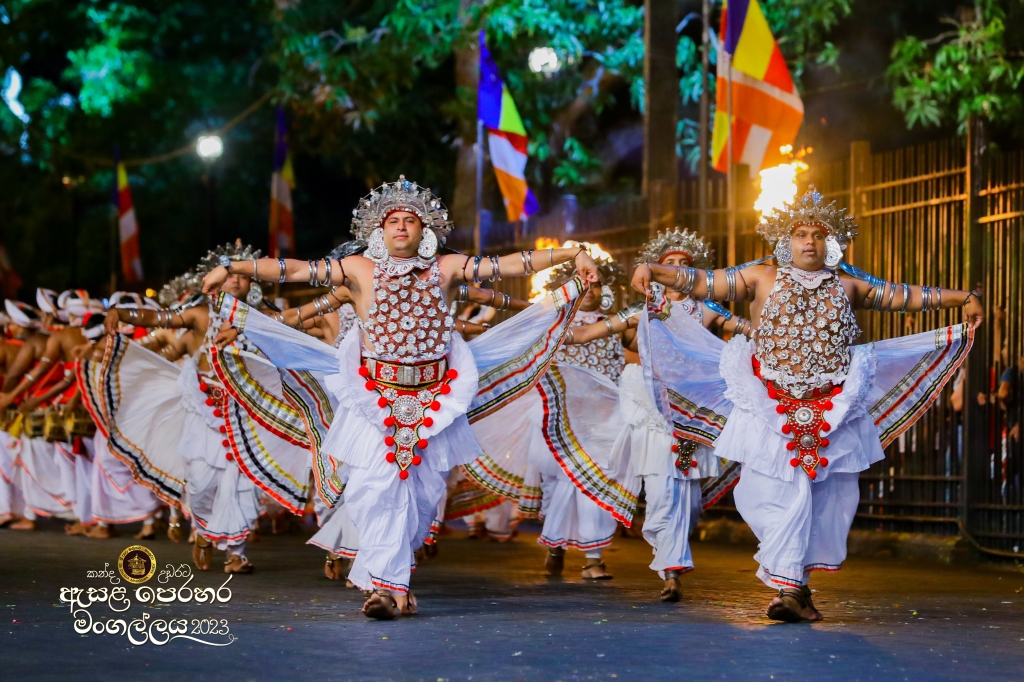Origins and Historical Significance
Kandyan dance, known locally as “Uda Rata Natum,” traces its roots back to the Kandyan Kingdom era, particularly flourishing during the reign of King Kirthi Sri Rajasinghe (1747-1781). It was initially performed in the courts and temples as a sacred ritual to invoke the blessings of the gods and ensure prosperity and protection for the land. The dance has strong ties to Buddhism and was traditionally part of the Dalada Perahera, a grand procession celebrating the Sacred Tooth Relic of Buddha.

Costumes and Accessories: One of the most striking aspects of Kandyan dance is its elaborate costumes. Male dancers don the iconic Ves costume, featuring a white loincloth, silver chest plates, and an intricately crafted headpiece. Female dancers, although less common in traditional performances, wear vibrant, flowing dresses that enhance their graceful movements.
Movements and Techniques: Kandyan dance is characterized by dynamic movements, jumps, and spins, symbolizing the power and agility of the performers. The dancers’ intricate footwork, combined with precise hand gestures and facial expressions, creates a captivating visual spectacle.
Music and Drumming: The rhythm of Kandyan dance is driven by traditional drums, primarily the Geta Beraya, a cylindrical drum that produces deep, resonant sounds. The drumming patterns are complex and provide the rhythmic foundation for the dancers’ movements. Other instruments, like cymbals and flutes, add layers to the musical accompaniment, enriching the overall performance.
Kandyan dance is more than just a performance; it is a living tradition that encapsulates the spirit and history of Sri Lanka. Its graceful movements, vibrant costumes, and rhythmic music offer a glimpse into the island’s rich cultural heritage, making it a timeless treasure cherished by all who witness its splendor.
